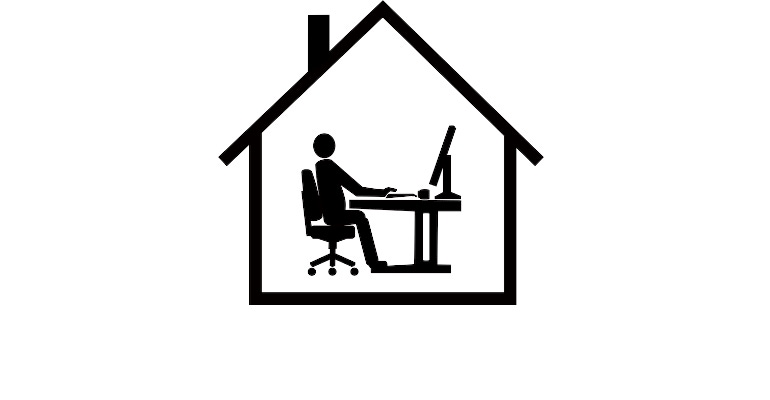A Tale of Two Pandemics: How Companies Are Succeeding—or Struggling—with Work-at-Home Teams
Preparation has helped companies remain productive as employees switched to working from home during the pandemic. But what can a company do if it hadn’t prepared?
July 28, 2020

“It was the best of times, it was the worst of times,” wrote Charles Dickens in A Tale of Two Cities. While no one would call 2020 the best of times, there are dramatic differences in how hard companies have been hit during the COVID-19 pandemic. Some companies have struggled along, frantically trying to adjust to make work from home a reality. Others have made the switch with relatively little interruption in productivity and day-to-day business functions.
This divide between companies isn’t random. There are some marked differences between companies that have made the transition smoothly and those that haven’t. At our company in particular, we had a fairly seamless transition to work from home given enhanced communication tools, preparation, and personalization. Here are some considerations for you and your company to make in terms of technology, productivity, and employee engagement.
Technology
The ability to adjust in drastic situations, such as a pandemic, is related to how well a company prepares during the best of times. As an ISO-certified organization, we’ve long had a disaster recovery plan in place. Our employees have also enjoyed the chance to work from home once or twice a week long before the pandemic. Because we had a work-from-home program, the technology was in place for employees to securely access the network from home. Equally important was the trust that existed between employees and their managers. That trust enabled employees to work from home without managers feeling like they needed a way to monitor them. While our transition hasn’t been easy in other ways, it was fairly seamless when it comes to technology.
If things have been difficult for prepared companies, they’re much worse for unprepared ones. Companies that weren’t prepared were scrambling to figure out how to connect their employees while working from home. Without cloud-based software to store documents and manage tasks, communication is left up to email and phone calls. And considering how misused “Reply All” is, email isn’t always the best way to ensure everyone’s on the same page. A centralized system that everyone can access provides complete visibility and clear communication between teammates. Without that, version control, edits to a document, and tracking feedback are all guesswork.
This brings up the question of how secure your work-from-home policy is. Do you use two-factor authentication? Are employees trained on detecting phishing emails? Ransomware attacks are on the rise, and yet some companies have taken security shortcuts while making this work-from-home transition. When a company is prepared for remote work, employees do not have to find shortcuts and workarounds to accomplish their tasks. For example, if employees don’t have company laptops to take into their homes, a business may allow them to use personal devices. This may seem reasonable if work-from-home is meant to be temporary, but not knowing the security of an employee’s private laptop puts a company at risk.
Productivity
People talk at the office. A lot. At their desks, in the elevator, in the hallways, in the breakroom, in the bathroom, employees socialize at the office. There’s a big difference between companies that encourage this and ones that don’t. And that difference is all the more apparent during the pandemic. Militaristic management might keep employees on task, but employees are happier and more productive when Big Brother isn’t constantly peeking over their shoulders. At MasterControl, instead of monitoring our employees, we’ve created an environment that fosters trust between employees and management. While this does result in a certain amount of non-work activities, it ultimately makes our employees more productive, not less. And that applies regardless of whether our employees are at home or working from the office. The social aspect of work shouldn’t be ignored in the move to work from home. Since employees can no longer hold impromptu conversations, we had to find other ways to bring a personal touch to work.
One of the ways we did this was through an instant-messaging platform. Employees are just as likely to be sharing memes as discussing their latest project. And we’re okay with that. We know it helps them connect and those connections are part of what has built our great company culture. In our executive team meetings, we intentionally set aside time to talk about what’s happening in our lives on a personal level. Taking the time to share and listen to each other builds our relationships and mimics some of the in-person interactions we’re no longer having.
Conversely, a lack of trust doesn’t foster loyalty. This puts a business at greater risk when employees have to switch to working from home. If employees are driven by fear, productivity can plummet in a work-from-home environment. Even though it takes time to build trust between a company and its employees, it’s never too late to start. Companies can begin by trying to engage their employees and to help them be self-motivated. One of the ways to do this is communication. This includes official, business-focused communication and the above-mentioned more casual communication. When employees know what’s going on, what’s expected of them, and are given a little leeway, they’re more productive because they’re more engaged.
Employee Engagement
The most engaging forms of communication are similar to in-person conversations. In a work from home environment, video calls and instant messaging are the best tools. Video calls provide face-to-face communication, and instant messaging provides back-and-forth conversations that are similar in nature to what would happen in the office. There’s always email, but an instant-messaging platform enables faster communication and issue resolution. One of the things we realized during the transition to work from home is that we had several different instant-messaging platforms used across different teams. We had to pick one and make it the company’s official tool. This ensured we had solid cross-departmental communication. Instant messaging also lets employees connect on a personal level, which leads me to my next point.
Communication between coworkers isn’t just essential to keep your business going. Those impromptu conversations previously mentioned are just as important to morale as they are to business. One of the side effects of employees working from home is they don’t interact with each other as they usually do. The personal conversations tend to get lost. Social connections in the workplace help employees be successful. Conversely, removing social connections leads to employees becoming depressed and despondent.
At MasterControl, we foster these relationships with fitness clubs, employee events, and team building activities. Our snack program is specifically designed to encourage employees to visit other floors and interact with employees that they wouldn’t normally run in to. The methods have changed, but we still want our employees interacting in both social and professional settings. Some teams have held virtual after-work social hours and others use online tools to play games together. Anything that lets your team members connect in a personal way will be beneficial.

Above: Each conference room has indicators to show where employees need to sit to maintain a 6-feet distance.
Looking Forward after the Pandemic
If a company is going through the worst of times now, that doesn’t mean it can’t take steps to better prepare for the future. Companies that had to put together a work-from-home policy while switching everyone over can still refine that policy. They can work on building trust between the employees and their managers and implement practices to reflect that concern. Employees need to know they won’t be penalized for working from home when they’re sick.
For companies that were prepared, the future won’t see us heading back to the same workspace we left. Social distancing will change floorplans, conference rooms, and company-wide meetings. It’s entirely possible that employees will never switch back to working five days in the office. And that can be a good thing. Using tools for video calls or instant messaging can streamline work, even when speaking in person is possible. However, in-person interactions are still vital for building and strengthening relationships.
Regardless of which camp your company falls into, there’s preparation to do. Things are slowly changing, and the economy is reopening, but that doesn’t mean the pandemic has been resolved. The severity of the pandemic will likely continue to ebb and flow, making adaptability and planning important as we go into the future.
About the Author(s)
You May Also Like


.png?width=300&auto=webp&quality=80&disable=upscale)
